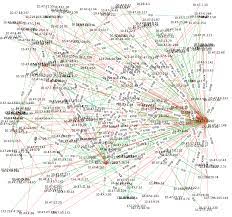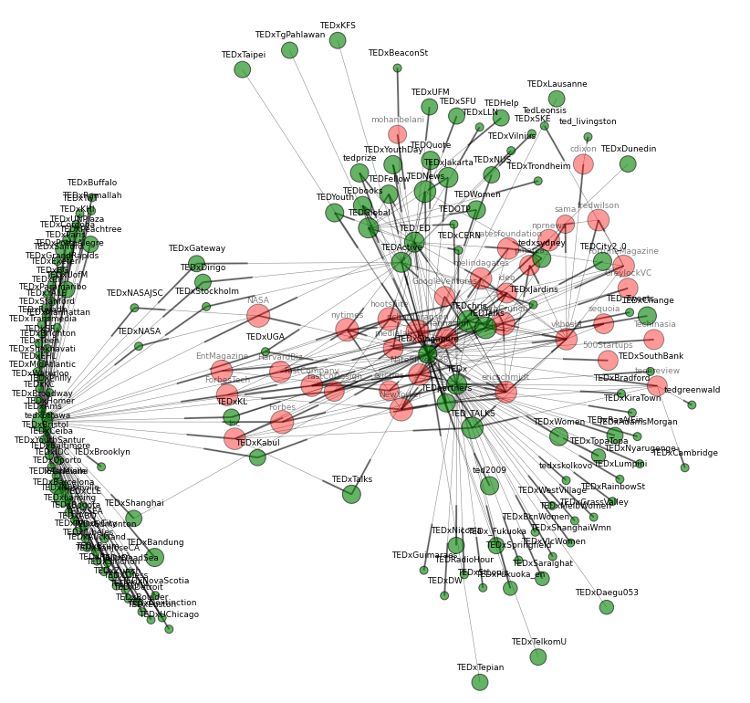
Resolve Ip Address Conflicts
How to fix the ‘Windows has detected an IP address conflict …
An IP address is a unique way to identify your computer when connected to a network. Each device has a different IP address, making it simple for the network to differentiate them.
If you’re getting the “Windows has detected an IP address conflict” error, it means that your IP is already in use within the network. All private IP addresses must be unique, or else you will run into complications.
For example, if you connect a PC, a laptop, and a smartphone to the same network, there should be three different IP addresses. However, if two of these devices share the same IP address, it’ll be virtually impossible for the network to make a difference between them.
This is either an issue in your PC settings or in your router.
You should troubleshoot this issue immediately after receiving it. The conflicting IP addresses can lead to complications when using the network. Follow our guide to learn how you can get rid of this error message.
Windows has detected an IP address conflict Quick Fixes
There are many ways to solve your IP address issues. Some are more advanced than the others; our list goes from the simplest solutions to more advanced ones.
Because of this, it’s recommended to try the methods in order from top to bottom. If the simpler methods didn’t work for you, follow our steps to ensure that your devices are restored to have unique IP addresses.
Solution 1: Restart your router
Your router is responsible for assigning IP addresses to each device connected to the network. It’s possible that your router failed to give a unique IP to a device, resulting in the “Windows has detected an IP address conflict” error message.
Locate the power button on your router and turn the device off. This will disconnect you from the internet and shut down the network temporarily.
Wait for a few minutes. Usually, 5 minutes is more than enough time for your router and network to properly shut down.
Turn your router back on.
When your router is done turning back, try and check if the error is still present. You might have to re-connect your devices to the network.
Solution 2: Disable then re-enable your network adapter
The network adapter in your device interfaces it to the network. It can either be a USB network adapter or a wireless one. Disabling and re-enabling this adapter in Windows can often fix issues with your connection.
Please note that you’re required to have a local user with administrative permissions to perform this method.
Press and hold the Windows key on your keyboard, then press R. This will bring up the Run utility.
Type in and click on the OK button. Doing this will open up the Network Connections window.
Right-click on the adapter you’re using, then select the Disable option.
Once it’s properly disabled and you’re disconnected from the network, right-click on the same adapter and click Enable.
Restart your device and try to check if the IP conflict is still happening.
Solution 3: Release and Renew Your IP Address
This method is one of the most trustworthy methods when it comes to network problems, especially with IPs. We will be using commands to release your current IP and prompt your router to assign a new, fresh IP to your device.
Search for Command Prompt in your search bar. Right-click on the top result and choose Run as administrator. You might be prompted to enter your user password.
In the command prompt window, type in the following three commands. Make sure you press enter after each one:
netsh int IP reset c:\
ipconfig /release
ipconfig /renew
After attempting to do this, test if Windows still detects an IP address conflict with your device. Even if the error still persists, we still have some methods that might help you with troubleshooting.
Solution 4: Remove Static IP
Having a static IP address means that the address your computer is using was entered and configured manually. This can cause issues on your network.
It’s often preferred to have an IP address automatically assigned to your device by your router. If you’re getting the “Windows has detected an IP address conflict” error message, we recommend trying to use an automatic IP instead.
Right-click on the adapter you’re using, then select the Properties option.
Double click on Internet Protocol Version 4 (TCP/IPv4).
From the General tab, select both Obtain an IP address automatically and Obtain DNS server address automatically.
Click the OK button on both windows and restart your computer.
Solution 5: Update your Network Card Driver
Regularly updating your drivers is something you should do all the time. Outdated network card drivers can cause more trouble than you’d think.
There are multiple ways in which you can update your drivers. Follow one of the guides which suit your approach.
Method 1: Update your driver from Windows itself
In this method, we will be using the integrated Device Manager to find a new, updated driver.
Press and hold the Windows key, then press R. This will launch the Run application.
Type in and hit OK to open the Device Manager.
Expand the Network adapters section by clicking on the arrow icon.
Right-click on your driver and select Update Driver.
Click on Search automatically for updated driver software.
If Windows can find an updated driver, it will automatically download and install the update to your computer.
Restart your PC and test if the issue is solved.
Method 2: Update your drivers with a third-party app
You can also find and download third-party updater tools such as Driver Booster, DriverHub, or DriverPack Solution. These three tools are all free and easy to use, but you can always look around the web for more advanced apps.
Note: Always make sure that the app you’re using is trustworthy. Many applications that promise to fix or update your drivers contain malware, adware, or spyware. We recommend searching the name of the product and reading reviews made by real people.
Solution 6: Disable IPV6
Due to the IPv6 technology being fairly new, it can cause the “Windows has detected an IP address conflict” error to show up on your device. The last thing we recommend trying is to disable IPv6 entirely.
Remove the checkmark from Internet Protocol Version 6 (TCP/IPv6) so that the box is empty. This will disable the use of IPv6 on your device.
Restart your computer and see if the issue is fixed.
We hope that with our help, you were able to get rid of the ‘Windows has detected an IP address conflict’ error on your PC.

Resolving IP address conflicts – Linksys Official Support
What is an IP address conflict and when does it occur?
An IP address conflict happens when two (2) or more devices in a network have the same IP address. This results to one or both of the devices not being able to communicate with the wireless network. An IP address conflict may happen in situations such as:
The DHCP server encounters a problem and assigns the same dynamic IP address to two (2) or more different devices.
What does this mean? Your router’s DHCP server feature is enabled by default. It has the capability to provide unique IP addresses to different devices that connect to the network. However, the router’s DHCP server may encounter internal errors wherein it is not able to properly track the addresses that it has assigned to various devices which may sometimes lead to a conflict in addressing.
The administrator of the wireless network assigned the same static IP address to two (2) or more different client devices.
What does this mean? Assigning a static IP address can be done manually. An IP address conflict arises if the one who assigned the static IP addresses may have overlooked the addresses that they have used and gave out similar ones to multiple devices.
How to resolve an IP address conflict? Resolving an IP address conflict depends on the setup of the network. Read on below to learn what kind of network problem you’re having and what to do to resolve this issue:
DHCP server problem – If the conflict is caused by the DHCP server, an ideal solution for this would be to release and renew the IP address through the Command Prompt. Click on the link below for instructions on how to do this:
Renewing a computer’s IP address
Static IP address – If the IP address conflict comes from a network with assigned static IP addresses, the administrator may need to review the addresses that were used in the network and verify if there are instances of using similar addresses on different devices. If there are cases of IP address conflicts in the network, then the administrator needs to re-assign unique static IP addresses to the devices in the network.
Click on the links below for instructions on how to assign a static IP address:
Assigning a static IP address on a wired computerAssigning static IP address on a wireless computerAssigning a static IP address to a computer with Windows 8 or Windows 8. 1 operating system

How to Identify and Troubleshoot an IP Conflict | NetBeez
What’s an IP Conflict? An IP conflict occurs when two or more hosts in the same subnet are configured with the same IP address. When this happens, communications with the two conflicting hosts are mixed up. One host may receive packets that belong to the other one, and vice versa. As result, IP conflicts have very unpredictable consequences on the affected hosts. Hosts may experience continuous connections and disconnections. This is something that should be addressed as soon as the problem are the causes of an IP conflict? IP conflicts happen for different reasons. In one scenario, one (inexperienced) user may assign a static IP address that is part of a DHCP pool to his computer. If that same IP address is then dynamically assigned to another computer by the DHCP server, an IP conflict will occur. Fortunately, this problem can be avoided by denying users permission to set the IP settings on their computer. Unfortunately, this something that is not always possible in all network environments (e. g. Bring Your Own Device). In another scenario, a computer is assigned an IP from the DHCP server; this computer then goes offline. As the lease timeout expires, the DHCP server may assign that IP address to another computer. Now, let’s imagine the computer that first received the DHCP lease comes back online; for some reason, the computer isn’t able to reach the DHCP server. The computer will now self-assign the IP address using the DHCP lease saved in the cache (a behavior that is common on Linux hosts). This computer is now causing an IP conflict. This scenario is more difficult to troubleshoot than the previous one, but still possible, in my experience. The last scenario could be caused by human error. For example, an operator may assign an existing IP address to a network device, like a router or switch. When the misconfigured device is then connected to the network, it creates an IP conflict. This scenario is avoidable by implementing peer review of network configuration to detect an IP conflictBoth Windows and Macintosh operating systems notify the user via pop-up notification when an IP conflict is detected with another computer. Here’s an example of a Windows IP conflict notification …Detecting an IP conflict is even more difficult if it’s affecting remote network devices that are not end-user workstations. It’s more difficult because you don’t have local access to the host and you are not able to have a stable remote this scenario, one way to detect an IP conflict is to first ping the remote IP address. If the ping test returns high packet loss, then it’s worth the continued troubleshooting. To troubleshoot this problem you should:1) Get access to the router that serves as the default gateway of the subnet where the conflict is happening. 2) Inspect the router’s ARP cache and check if the MAC address associated to the conflicting IP changes frequently. To verify this, you have to execute every two or three seconds the command that returns the ARP the MAC address does change then, congratulations! … you have an IP conflict. How to fix an IP conflict? If you have detected an IP conflict in your network, you’ll need to correct the IP settings of the device that is “squatting”. Ideally, you or someone else on your team has access to the device, to ensure that the correct IP settings can be set. If there’s no way for you to locally access the problematic host, then you have few options. One option is to remove the host from the network by shutting down the switch port that it’s connected to. Make sure that you do this off hours when there are no users on the network. Also, make sure that your changes won’t cause any further damage to applications or network services. Please don’t shut down a trunk port. In any case, it’s highly recommended that you review your specific case with your team and act accordingly. I hope this article provided some guidance on how to deal with IP conflicts. If you have any feedback or questions, please do so in the comments section. Cheers!
Frequently Asked Questions about resolve ip address conflicts
What causes conflicting IP addresses?
An IP address conflict happens when two (2) or more devices in a network have the same IP address. This results to one or both of the devices not being able to communicate with the wireless network. … The DHCP server encounters a problem and assigns the same dynamic IP address to two (2) or more different devices.
What happens in an IP conflict?
What’s an IP Conflict? An IP conflict occurs when two or more hosts in the same subnet are configured with the same IP address. When this happens, communications with the two conflicting hosts are mixed up. One host may receive packets that belong to the other one, and vice versa.Oct 24, 2018
How do I fix an IP address conflict Mac?
In most cases, the DHCP server will provide your Mac with another IP address in a few minutes. Try connecting again. Close the app that is using the connection (such as Safari or Messages), then open the app again. Put your computer to sleep, wait a few minutes, then wake it from sleep.

